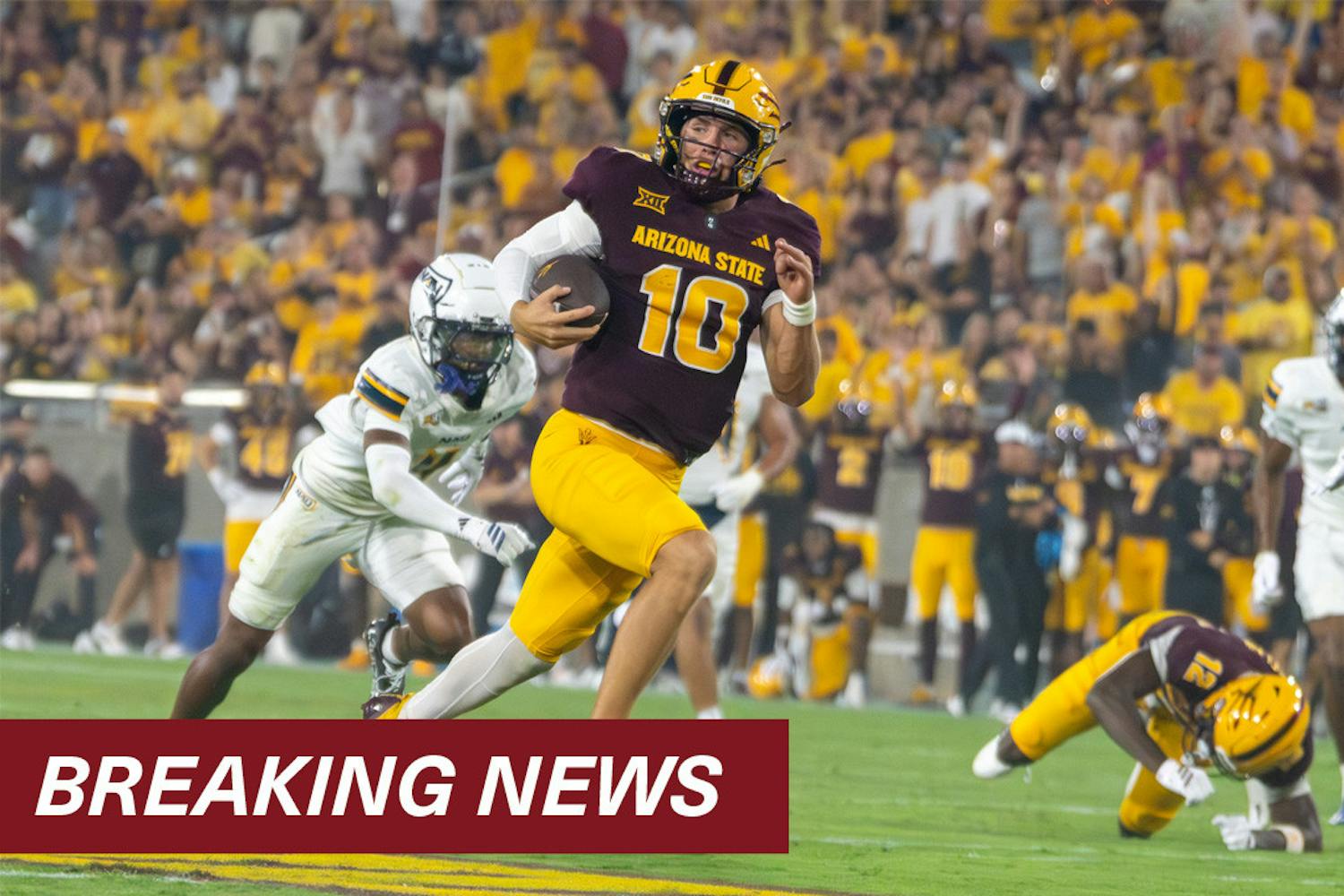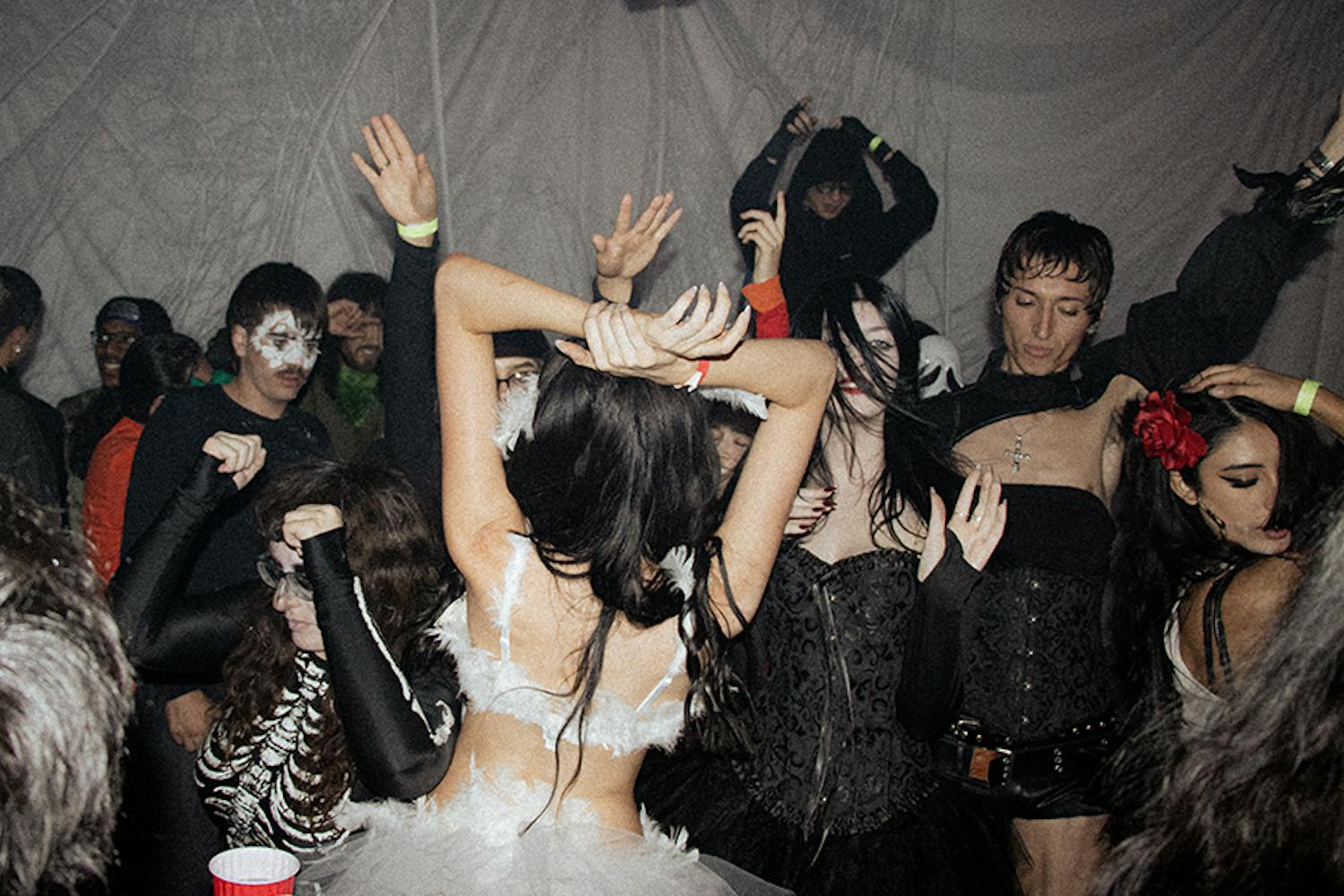We're in tough economic times.
Friedrich Nietzsche once said, "That which does not kill us makes us stronger."
It is unfortunate that ASU's Public Events department will have to do without $1.5 million in subsidies. It is now faced with wondering where and how it will raise money to keep afloat.
I ask, "Where's the love?"
The book, "The Arizona State University Story," by Ernest J. Hopkins, founder of the school's division of journalism, and Alfred Thomas Jr., former registrar and director of admissions, is not only a wonderful account of our school and state history but also reminder of what school spirit and labors of love are all about.
According to the book, Goodwin Stadium (now Parking Structure 1) had a dirt track around it in 1946. Former Athletic Administrator Don Kinzle wanted material for the track, but funds were extremely tight since WWII ended and the Arizona State Teacher's College had experienced a population explosion. Swarms of students on the GI Bill were enrolling at what would become ASU.
Kinzle discovered a huge amount of cinder blocks in Prescott. Finding out that it would cost $325 to ship them by Santa Fe rail, Kinzle was in a pickle. The war had just ended and extra money was nowhere to be found, especially for building a college track. However, the American spirit kicked in, and Santa Fe officials were able to ship the cinder blocks from Prescott to Tempe for $125.
Kinzle raised the money from alumni, school faculty and Tempeans. But the job didn't stop there. Once the blocks landed in Tempe, students went to work and built the track by hand, literally. They dug, rolled and wheel-barrowed, demonstrating a real labor of love.
As a result, the track team won the Border Conference for four consecutive years.
Goodwin Stadium was finally razed in 1978 to accommodate the school's growth and demand for more parking spaces. A marker at the parking structure commemorates the Sun Devils who came before us, as well as their labor of love for our school.
I understand that we, as students, can only do so much. And it may seem ridiculous to even propose that we should donate additional monies to certain causes when we just experienced a record tuition hike.
Yet, Colleen Jennings-Roggensack, executive director for ASU Public Events said in Monday's issue of The State Press that if they needed carpet, she would raise funds for it.
Surely many of us have lobbied to parents for something that meant a lot to us. A cell phone, a car, clothes, etc.
If our Public Events department needs carpet, why can't students pitch in a small fraction of their time or money (or both if you're extremely spirited) to the cause? Would, say for example, 50 cents per willing student be able to purchase some amount of the needed carpet?
Fifty cents can buy you M&Ms from a candy dispenser, a phone call on a pay phone or time at the parking meter. Would you be willing to show your dedication to your school by donating pocket change?
Political science freshman Emily Elgie said, "Yeah definitely, especially if it was concerning my area of study or an area where I hung out ... something that had an impact on my education and my life here. Of course I'd be willing to donate."
The school's tough economic times could use Elgie's Sun Devil spirit. If a department is in need, students should pitch in, no matter how big or small a donation of money or time. Hard times shouldn't mean hard spirits.
I'm not asking you to become W. P. Carey and donate $50 million to the school, and I'm not asking everyone to become a cheerleader, either.
Let the administrators take care of administrative issues while students tackle what should be student issues. The founders and alumni of ASU helped build this school out of love for education. Let's continue that tradition.
Evonne S. Avalos is a journalism and history senior. You can reach her at evonne.avalos@asu.edu.




